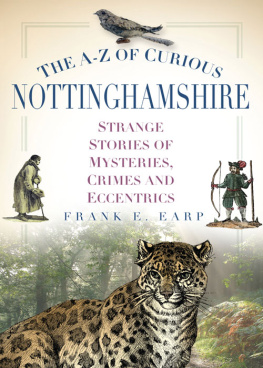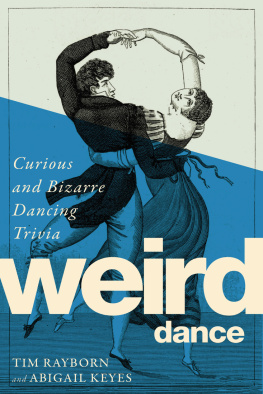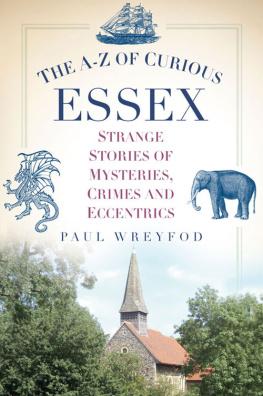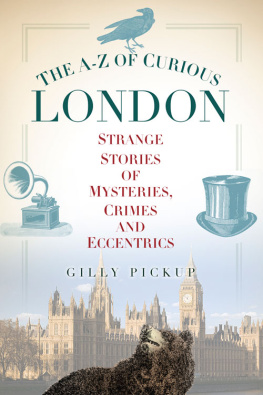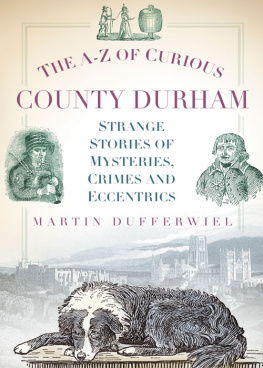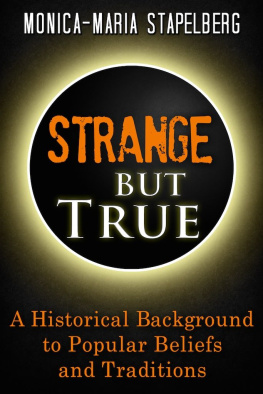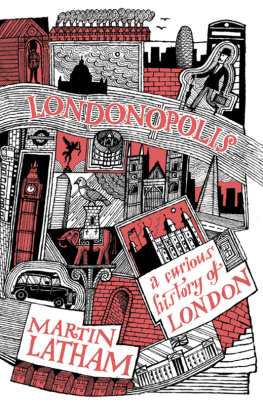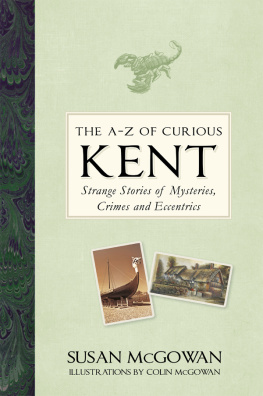
AY-UP MI DUCK
A TRADITIONAL NOTTINGHAMSHIRE GREETING, THOUGHT TO DERIVE FROM THE OLD NORSE Se upp , MEANING TO LOOK OUT OR WATCH OUT. DIALECT: MI MY AND THE ANGLO-SAXON DUKA, LITERALLY DUKE.
Contents
I HAVE BEEN studying the folklore and history of Nottinghamshire for over forty years now, and there are many people who I must thank for their help and advice. All of these people have helped contribute to my accumulated knowledge which has led to me to writing this book. You know who you are, so thank you, all of you!
Specifically, thanks go to Peter Hannah, who back in the early days was my partner in research. My thanks go to the late Paul Nix, whose expertise, particularly in the subject of Nottinghams caves, has constantly inspired me, and to Dr Robert Morrell, an early pioneer in the history and folklore of Nottinghamshire.
I would like to thank my youngest son Joseph Joe Earp, who is following in his fathers footsteps; John Howorth, Editor of the Topper newspaper, for allowing me to publish my weekly articles in the paper; and Robert Bob Trubshaw for his help and inspiration and providing his contribution to this work.
Finally, my thanks go to the good citizens of Nottinghamshire, past and present, for making the county such a curious place.
T HE DICTIONARY defines the word curiosity as the desire to know about something. It is also used to refer to that about which the desire for knowledge is sought. Curiosity may have killed the cat, but it is one of the things that make us human. It is curiosity that has brought society knowledge.
So, what curiosities does the County of Nottinghamshire have? Tigguacobauc, now there is a curious word, even if you understand its meaning. But this may have been the first recorded name for the settlement that is now the City of Nottingham.
Nottingham has two infamous curiosities: its caves and its alleged most famous son, Robin Hood. There are around artificial caves under the city, each of which is a curiosity in its own right. There have been many things written about Robin, good, bad and indifferent. Rather than contribute something more to the pot, I have chosen instead to provide a list of places and objects which bear his name.
As the reader will find out, there is more to Nottingham and its county than Robin Hood and the caves. I have always been curious to know how it all began, what was on Castle Rock, BC (Before the Castle)?
Excellent examples are the curiosities contained within these pages inlcude the countys three Old Stones, natural geological features which for tens of thousands of years have witnessed the passage of time and human history.
Nottinghamshire had and probably still does have its eccentrics, people like Benjamin Mayo, the Old General, Frank Robinson, The Xylophone Man and Kitty Hudson, the girl who ate pins.
The county has seen its share of violence and crime, like the murder of Elizabeth Sheppherd and highwaymen like Swift Nick and Sawly Tom.
They say that there are more ghosts per square mile in Britain than any other country in the world. Nottingham certainly has its fair share of ghost and hauntings, and I have included six of the least-known supernatural tales.
It was curiosity that brought the American writer Washington Irvin to Nottinghamshire and led him to spend Yule (Christmas) 1824 in the heart of Sherwood Forest. It was at Newstead Abbey that he witnessed many of the curious customs of the season.
Running like a thread through this book is an ancient highway now known as Mansfield Road. It is curious how it relates to and connects many of the people and places mentioned within these pages.
I hope that this introduction has made the reader curious enough to read on!
Frank E. Earp, 2014
ANCIENT NOTTINGHAM
Prehistoric Earthworks, Ancient Mounds and a Roman Tower
Soon after the Norman Conquest of 1066 , a castle was built on the top of the massive sandstone promontory Castle Rock, which juts out from the hills like a great stone monolith. On the south side the cliff face rises ft (m) from the road. Over the millennium, at all levels, it has become full of caves and has taken on the appearance of a great Swiss cheese. This may be considered one of the finest views the city has to offer.
It is inconceivable that this truly impressive site had not been used before. What did the Normans find here when they came to build the castle? Certainly they found many caves excavated into the cliff face. We may believe that this was Assers Tigguacobauc cavy house the earliest recorded name for a settlement in the Nottingham area.
The Normans would also have found that someone had cutoff the promontory from the hill on the north and east side with a massive ditch in places cut into the bedrock over ft deep. That the ditch was already old when the Normans arrived is attested to by the fact that it was being used as a Saxon boundary. There is no evidence to suggest that the Saxons had settled around this site. It is generally agreed that the settlement of Snottingham, which gave the city its name, was somewhere in the area of the Lace Market, around half a mile to the east. It is unlikely then, that the Saxons would have gone to the considerable effort of constructing such a massive earthwork and the likelihood is that it was prehistoric.
The ditch starts on the eastern side, at the foot of Castle Rock, and follows the line of Castle Road up the hill to the castle gates. This section was utilised by the Normans as a dry moat the eastern outer defences of the castle. It was later to become a medieval sunken road known as The Hollows. At a point almost opposite the statue of Robin Hood, another old road Hounds Gate joins Castle Road on its right-hand side. Here, in 1779 , workmen excavating to a depth of ft discovered what they described as a solid cart road.
From this point the course of the ditch takes a north-westerly turn along the line of the road known as Standard Hill. In places the road surface is built directly over the line of the ditch. Building on the south side of Standard Hill and Postern Street has always proven problematic. In 1807 , it was decided to build a new church St Jamess on Standard Hill. Work on the foundations was greatly impeded by the loose soil which was infilling the ancient ditch. A solution was found in the form of a springing arch bridging the ditch.

The eastern face of the mighty Castle Rock. (Joe Earp, 2013, Nottingham Hidden History Team)
When work started on the new extensions to the General Hospital, evidence of this massive ditch was once again exposed. Foundations for the Round Ward now The Round House were particularly troublesome. The ditch here was found to be between ft and ft wide and ft deep. To make matters worse, a second parallel ditch ft wide and ft deep was found a few feet to the north.
The ditch continues its course along Postern Street to its junction with Park Row. Here, it takes a degree turn to the left and continues for several yards before terminating just before the gates of the old General Hospital. Here on its southern side the ditch partly enclosed an open field said to be an ancient camp.
The Derry Mount
Mystery surrounds the Derry Mount and its place in history. There appears to be no references to the mount earlier than the seventeenth century, nor does it appear on any early maps. In 1904 , the Thoroton Society published an old plan of the castle superimposed on a modern street plan. The mount which is described as being now levelled is marked between Mount Street and Park Row. This would place it to the rear of the modern buildings on the north side of Postern Street, close to its junction with Park Row.
Next page
